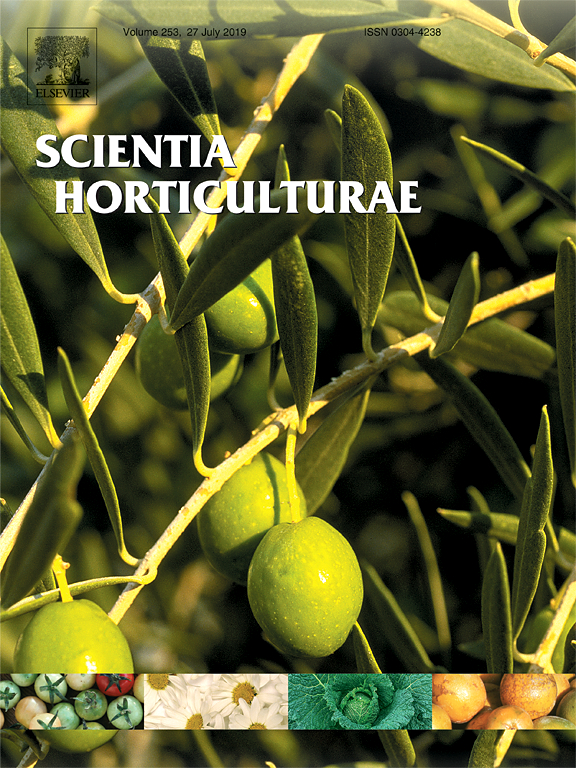View Item
- xmlui.general.dspace_homeCentros Regionales y EEAsCentro Regional Buenos Aires NorteEEA San PedroArtículos científicosxmlui.ArtifactBrowser.ItemViewer.trail
- DSpace Home
- Centros Regionales y EEAs
- Centro Regional Buenos Aires Norte
- EEA San Pedro
- Artículos científicos
- View Item
Biplot pattern interaction analysis and statistical test for crossover and noncrossover genotype-by-environment interaction in peach
Abstract
The presence of genotype-by-environment interactions (GE) remains a major issue for crop improvement. The aims of this work were: i) to compare the efficiency of parametric and non-parametric methods to test the presence of crossover (COI) and non-crossover GE (NCOI), ii) visual examination of the relationships between environments and genotypes tested, and iii) to test the effectiveness of dividing the peach season evaluations into mega-environments (ME)
[ver mas...]
The presence of genotype-by-environment interactions (GE) remains a major issue for crop improvement. The aims of this work were: i) to compare the efficiency of parametric and non-parametric methods to test the presence of crossover (COI) and non-crossover GE (NCOI), ii) visual examination of the relationships between environments and genotypes tested, and iii) to test the effectiveness of dividing the peach season evaluations into mega-environments (ME) using the biplot based on AMMI and SREG. Non-parametric ANOVA was more useful than the parametric approach because it can distinguish between the presence of COI and NCOI. Three test
methods, suitable for investigating two-factor interactions, were used to show that interactions between genotypes and environment involve significant changes in rank order. The Yang test based on mixed model theory combined with interaction-wise error rate was the most sensitive to detect COI, while the Gail and Simon, as well as the Azzalini and Cox methods were conservative. Which-won-where pattern was followed with four and two ME were found with AMMI and SREG, respectively. Entries G16 (Hermosillo P), G21 (María Emilia N), G2 (84.351.029 N) and G8 (Cotogna del Berti P) showed specific adaptability to ME-1, ME-2, ME-3 and ME-4 generated by AMMI, respectively; while G28 (Sunprince P) exhibited specific adaptation to ME-1 and G16 in ME-2 which were created by SREG. Average environment coordination (AEC) view of the GGE biplot involving the seven environments identified G10 (Flameprince P) as the most stable and high-yielding genotype across environments, unlike G8 and G28, which showed only high yields. Results indicated that AMMI and GGE biplots are informative methods to explore stability and adaptation patterns of genotypes in practical plant breeding and in subsequent variety recommendations. In addition, finding ME helps identify the most suitable peach genotypes that can be recommended for areas within a specific ME in either one or more test locations.
[Cerrar]

Author
Angelini, Julia;
Faviere, Gabriela Soledad;
Bortolotto, Eugenia Belén;
Arroyo, Luis Enrique;
Valentini, Gabriel Hugo;
Cervigni, Gerardo Domingo Lucio;
Fuente
Scientia Horticulturae 252 : 298-309 (June 2019)
Date
2019
Editorial
Elsevier
ISSN
0304-4238
Formato
pdf
Tipo de documento
artículo
Palabras Claves
Derechos de acceso
Restringido
 Excepto donde se diga explicitamente, este item se publica bajo la siguiente descripción: Creative Commons Attribution-NonCommercial-ShareAlike 2.5 Unported (CC BY-NC-SA 2.5)
Excepto donde se diga explicitamente, este item se publica bajo la siguiente descripción: Creative Commons Attribution-NonCommercial-ShareAlike 2.5 Unported (CC BY-NC-SA 2.5)

